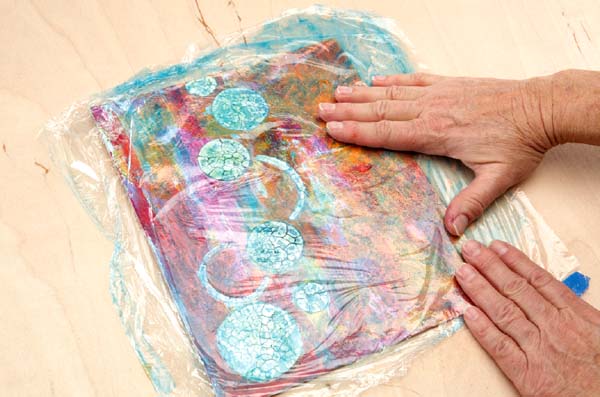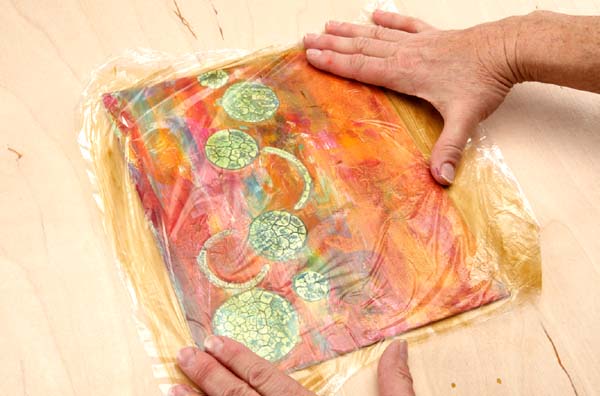Color Filter
Glazing can completely alter the impact of a color. The complement, or opposite color on the color wheel, can tone down a too-bright color. If you have a painting and the green is just too much, a red glaze will tone it down. Sometimes you end up with a piece in which the different parts of the painting aren’t “talking” to each other. A unifying glaze over the entire piece may be the answer. Let us show you how to test a glaze before taking the leap.
A glaze is a tiny bit of paint color mixed with a glazing medium. Glazing medium is usually an acrylic polymer medium with a retardant mixed in to keep it from drying too fast. Glazing mediums come in gloss, matte or satin.




Step 1
Put a piece of clear plastic wrap or painter’s tarp over the area you wish to apply the glaze. Mark the side of the plastic you are working on by adding a small piece of painter’s tape.
Step 2
Mix the paint into a pool of glazing medium. Use the tip of a palette knife to add tiny amounts of color to your glazing medium. Keep adding color to the glaze until you get the mix you desire.
Step 3
Paint the plastic that covers the area you wish to glaze. Evaluate the color.
Step 4
You can test-drive different glaze colors’ ability to unify a painting, warm it up, cool it off or tone it down—just experiment with different glazing colors.
Step 5
When you have decided which color works best, paint that color directly onto your painting. Remember, you can always rub some of it off for a bit of contrast.
